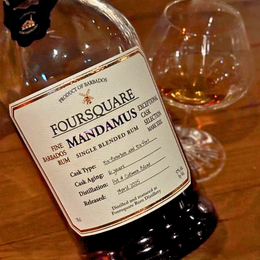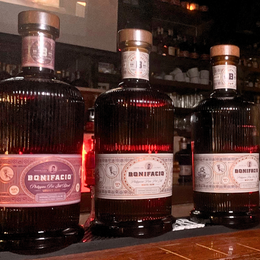
In the first of a three-part review, I thought I’d share my experience with @barbancourthaiti - a rhum brand that many of us would be familiar with, yet spoken so little about.
Barbancourt rhums come from the Caribbean island of Haiti, established since 1862 by the brothers Dupré and Labbé Barbancourt whom had sought to adapt the traditions of cognac-making for rhum, developing a process of double distillation of pure sugarcane juice, and tropical aging in French white limousine oak casks. In 1906, Labbé left the company, leaving Dupré the sole owner of Barbancourt, and it has continued as a family business ever since, now under the stewardship of Delphine Gardère.
Barbancourt sources its sugarcane directly from various small farmers across Haiti. The canes are then pressed for their juice, distilled and aged in French oak. The distillery had previously housed a pot and a column still, with both liquids blended before aging. However, the pot still was removed in the mid-1990s and in its place, another column still was installed.
The first Barbancourt I would be tasting is one bottled in the 70s, which would mean this would be a blend of pot and column still distillate, aged for at least 15 years in French oak, and bottled at 43% abv with an outturn of 20,000 bottles per batch. The words “Reserve du Domaine” indicate that this was for the European market, and is used interchangeably with “Estate Reserve” when bottled for the USA.
To many, it might be difficult to identify specific time periods for different bottlings as they all do look rather similar. But there are little details that indicate this was bottled in the 70s, in the form of the words highlighted in red “Over 15 Years Old” as compared to the later bottles that simply stated “15 Years Old”. Also, if you were to take a closer look at the few lines of text on the label, you would notice the name “J.P. Gardere”, which indicated that this was bottled under the stewardship of Jean Gardere, who managed Barbancourt from 1946-1990.
The nose exudes a softness, warmth, a gentle kind of elegance not often found in tropically aged rums. It somewhat resembles a sweet, floral nectar, a bit of mint, light caramel, vanilla, a drizzle of lemon, and just the slightest hint of mustiness that reveals its age.
On the palate, it starts off with a lovely sweetness that just seems to go on forever, flushed with vanilla cream, caramelised oranges, and slightly tangy on the sides. The finish is medium in length, still giving wave after wave of vanilla sweetness, a hint of sour plum, and slight dryness at the end.
This isn’t a rhum that gives layers and layers of complexity, nor do the tasting notes constantly evolve on the palate; instead, you are treated with a rhum that encapsulates the definition of elegance, even in its simplicity. Some might say its linear, but it is precisely that which defines Barbancourt. Just as Luca Gargano and @s_sukhinder would say, Barbancourt has always been one of their true loves, and its easy to see why.
Image Courtesy of @weixiang_liu









